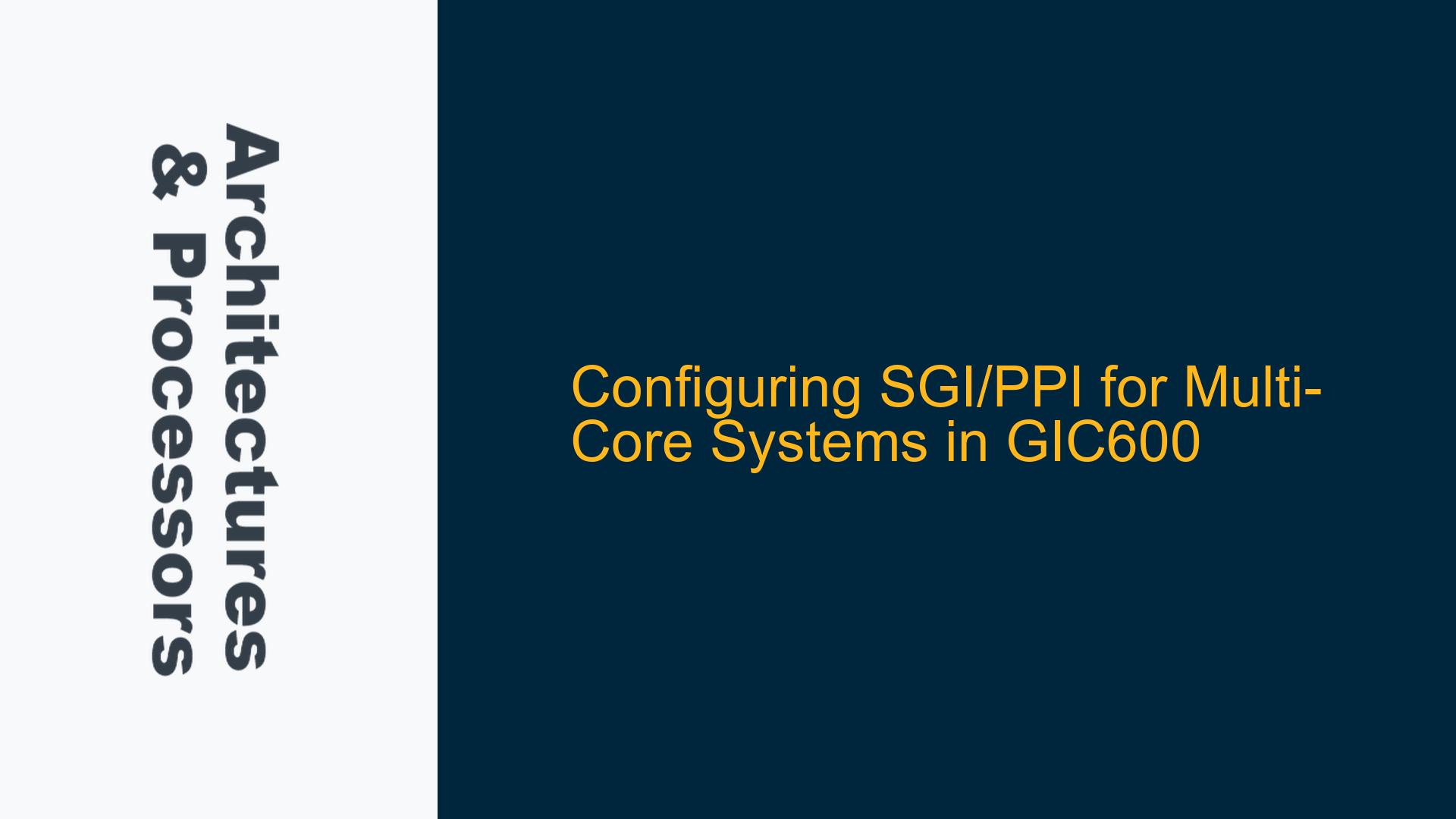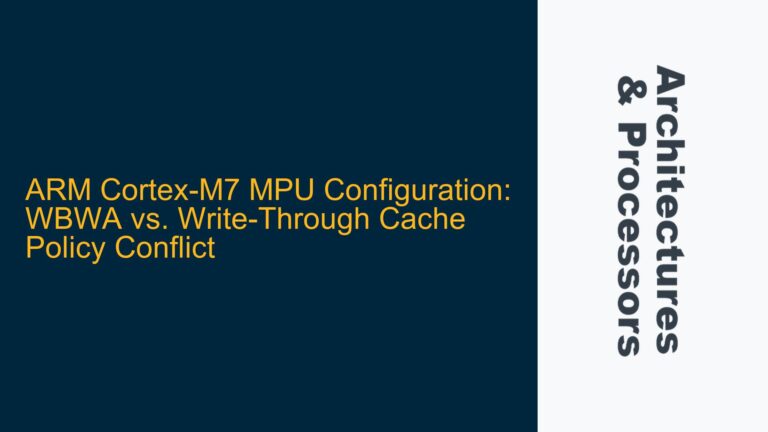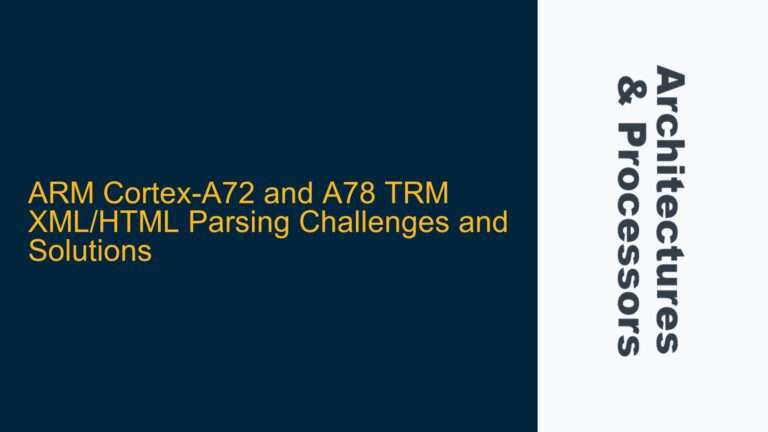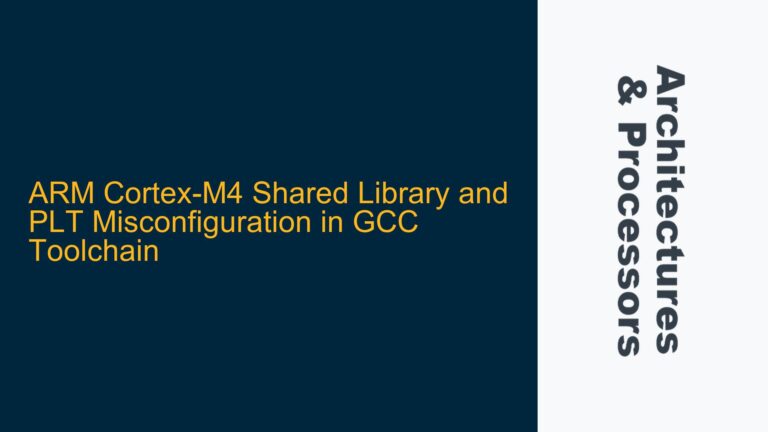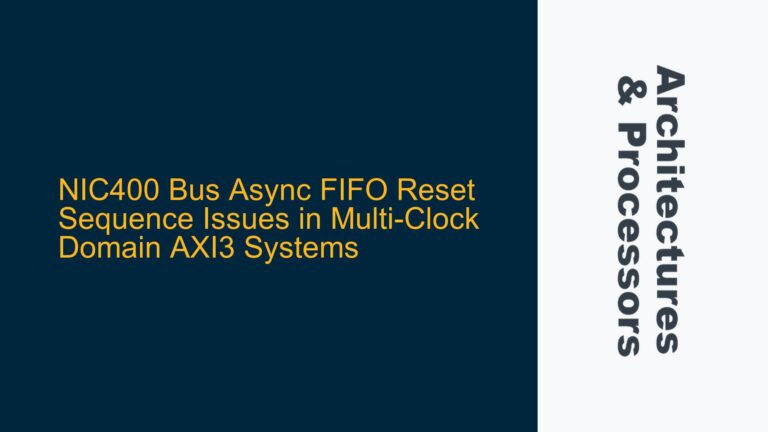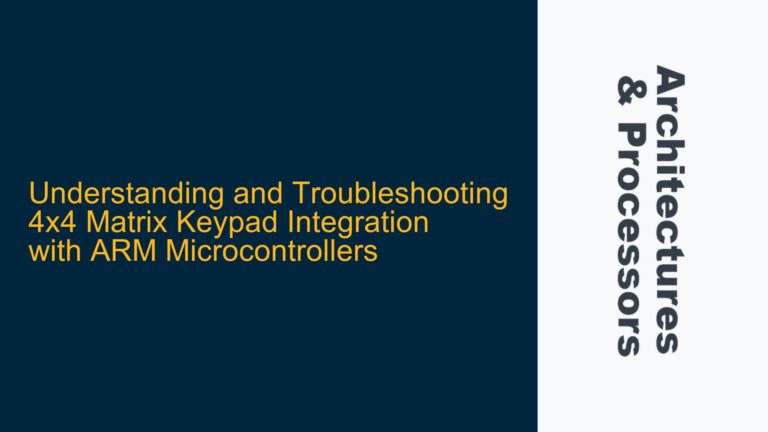GIC600 Redistributor Architecture and Core-Specific SGI/PPI Configuration Challenges
The Generic Interrupt Controller (GIC) 600 introduces a significant architectural shift compared to its predecessor, the GIC-500, particularly in how redistributors are managed. In the GIC-500, each Processing Element (PE) or core has a dedicated redistributor, which simplifies the configuration of Software Generated Interrupts (SGI) and Private Peripheral Interrupts (PPI). Each redistributor in the GIC-500 has a unique address space, allowing developers to configure SGI/PPI for each core independently by accessing the corresponding redistributor’s address.
However, the GIC-600 adopts a clustered approach where multiple cores share a single redistributor. This architectural change introduces complexity in configuring SGI/PPI for individual cores within a cluster. The redistributor in the GIC-600 is designed to serve a group of cores, and this shared resource model requires a different configuration strategy to ensure that each core’s SGI/PPI settings are correctly applied.
The core challenge lies in understanding how the GIC-600’s redistributor internally manages multiple cores. While the redistributor appears as a single entity to the system, it contains multiple "internal redistributors," each dedicated to a specific PE within the cluster. These internal redistributors are responsible for handling the SGI/PPI configuration for their respective cores. Each internal redistributor has its own address space, allowing for individual configuration despite the shared redistributor structure.
This architectural nuance is critical for system designers and verification engineers working with the GIC-600. Misconfiguring the SGI/PPI settings can lead to interrupt delivery failures, incorrect prioritization, or even system crashes. Therefore, a deep understanding of the GIC-600’s redistributor architecture and its internal mechanisms is essential for successful implementation and verification.
Internal Redistributors and Address Space Management in GIC-600
The GIC-600’s redistributor architecture is designed to optimize resource utilization while maintaining the flexibility required for multi-core systems. Within each redistributor, there are multiple internal redistributors, each assigned to a specific PE. These internal redistributors are responsible for managing the SGI/PPI configuration for their respective cores. Despite being part of a shared redistributor, each internal redistributor operates independently and has its own address space.
The address space of each internal redistributor is mapped within the larger address range of the shared redistributor. This mapping allows software to access and configure the SGI/PPI settings for individual cores without interfering with the settings of other cores in the same cluster. The address offset for each internal redistributor is determined by its position within the shared redistributor and the number of cores in the cluster.
For example, in a cluster of four cores, the shared redistributor will have four internal redistributors, each with a unique address offset. The base address of the shared redistributor is combined with the specific offset for each internal redistributor to form the complete address for accessing the SGI/PPI configuration registers. This addressing scheme ensures that each core’s configuration is isolated and can be independently managed.
The internal redistributors also handle the routing of interrupts to the correct core. When an SGI or PPI is generated, the internal redistributor ensures that the interrupt is delivered to the appropriate core based on its configuration. This routing mechanism is critical for maintaining the integrity of the interrupt system and ensuring that interrupts are handled efficiently.
Understanding the address space management and the role of internal redistributors is crucial for configuring the GIC-600 correctly. System designers must ensure that the address offsets are correctly calculated and applied when accessing the SGI/PPI configuration registers. Verification engineers must validate that the address mapping and interrupt routing mechanisms function as intended, particularly in scenarios where multiple cores are active and generating interrupts simultaneously.
Implementing and Verifying SGI/PPI Configuration in GIC-600
Implementing the SGI/PPI configuration in the GIC-600 requires a systematic approach to ensure that each core’s settings are correctly applied. The first step is to identify the base address of the shared redistributor and the address offsets for each internal redistributor. These addresses are typically defined in the system’s memory map and can be found in the GIC-600 Technical Reference Manual (TRM).
Once the addresses are identified, the next step is to configure the SGI/PPI settings for each core. This involves writing to the appropriate registers within each internal redistributor’s address space. The configuration process includes setting the interrupt priority, enabling or disabling specific interrupts, and configuring the interrupt routing. It is essential to follow the GIC-600 TRM closely to ensure that all required settings are applied correctly.
Verification of the SGI/PPI configuration is a critical part of the process. The verification strategy should include both functional and corner-case testing to ensure that the configuration works as intended under all conditions. Functional testing involves verifying that each core’s SGI/PPI settings are correctly applied and that interrupts are routed to the appropriate core. This can be done by generating interrupts and observing their delivery and handling.
Corner-case testing focuses on scenarios where multiple cores are generating interrupts simultaneously or where the system is under heavy load. These tests are designed to uncover any issues related to interrupt prioritization, routing, or timing. For example, a corner-case test might involve generating a high-priority interrupt on one core while a low-priority interrupt is being handled on another core. The goal is to ensure that the high-priority interrupt is delivered and handled correctly without disrupting the low-priority interrupt.
In addition to functional and corner-case testing, it is also important to verify the address mapping and the operation of the internal redistributors. This can be done by writing specific values to the SGI/PPI configuration registers and reading them back to confirm that the values are correctly stored and retrieved. Any discrepancies in the address mapping or register access should be investigated and resolved.
Finally, the verification process should include stress testing to ensure that the GIC-600 can handle the maximum expected interrupt load without performance degradation or failure. This involves generating a large number of interrupts in a short period and observing the system’s response. The goal is to identify any bottlenecks or limitations in the interrupt handling mechanism and address them before the system is deployed.
In conclusion, configuring and verifying the SGI/PPI settings in the GIC-600 requires a thorough understanding of the redistributor architecture and a systematic approach to implementation and testing. By following the steps outlined above, system designers and verification engineers can ensure that the GIC-600 is correctly configured and that the interrupt system operates reliably under all conditions.
